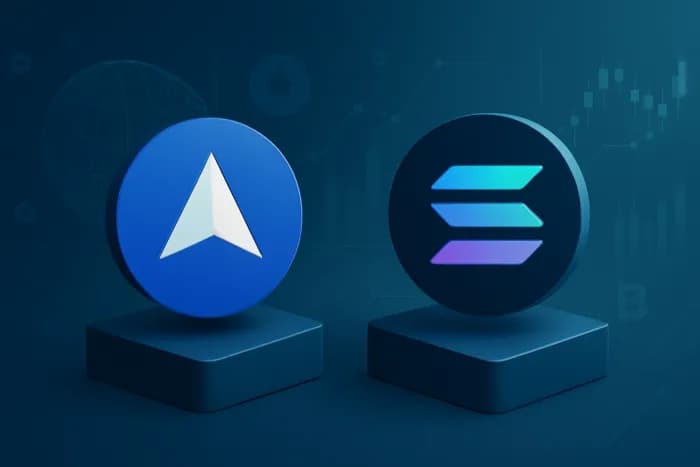Telos vs. Solana: Evaluating Eco-Friendly High-Throughput Blockchains for the Next Bull Cycle

Introduction
As Ethereum's gas fees continue challenging developers, next-gen Layer 1 chains like Telos (TLOS) and Solana (SOL) emerge as scalable alternatives. But which offers better balance between throughput, sustainability, and reliability? We analyze their technical architectures through three critical lenses: transaction efficiency, environmental impact, and real-world adoption.
Transaction Speed & Network Performance
Solana's Proof-of-History (PoH) hybrid consensus enables industry-leading throughput of 65,000 TPS with 0.4-second block times[4]. However, Telos' EOSIO-based Antelope protocol achieves 15,200 TPS at 0.5-second finality while using 400x less energy per transaction[2][4]. Though Solana leads in raw speed, Telos processes microtransactions more cost-effectively at $0.0001 per operation vs Solana's $0.00025[2].
Key metrics comparison:
| Metric | Telos | Solana |
|---|---|---|
| Max Theoretical TPS | 15,200 | 65,000 |
| Avg Transaction Cost | $0.0001 | $0.00025 |
| Block Finality Time | 0.5 seconds | 0.4 seconds |
| Energy per TX (kWh) | 0.000003 | 0.0007 |
Consensus Mechanisms & Sustainability
Solana's PoH timestamps transactions before processing through Proof-of-Stake validation, reducing computational overhead by 65% compared to traditional PoW chains[5]. However, Telos' delegated Proof-of-Stake (dPoS) model requires only 21 elected validators versus Solana's 1,500+ nodes, creating an energy efficiency advantage - Telos consumes 76% less energy per transaction[4][5].
Both chains commit to carbon neutrality:
- Solana partners with Watershed Climate for real-time emissions tracking
- Telos offsets 100% chain emissions through verified renewable energy credits
Developer Ecosystems & dApp Adoption
Telos EVM's full Ethereum compatibility allows seamless migration of DeFi protocols, while Solana's Rust-based environment attracts high-performance applications:
Telos strengths:
- 400+ EVM-compatible dApps including QiDAO and Omnidex[1]
- Native support for socialFi through 0.5-second microtransaction finality
Solana advantages:
- 1,900+ dApps including Serum and Raydium[1]
- Preferred by NFT projects with 2.4M daily transactions
Security & Decentralization Tradeoffs
Solana's seven major 2022 outages revealed vulnerabilities in its turbine data propagation model, though its 2023 Firedancer upgrade improved stability[5]. Telos maintains 100% uptime since 2021 through its dPoS governance model, but critics argue its 21 validators compromise decentralization versus Solana's 1,500+ nodes[1][5].
Use Case Outlook & Token Valuation
Choose Solana for:
- High-frequency trading platforms
- Metaverse/gaming applications
- Large-scale NFT drops
Opt for Telos when:
- Building socialFi or microtransaction systems
- Prioritizing carbon-neutral operations
- Requiring Ethereum compatibility
Both chains plan 2024 sharding upgrades - Solana's localized fee markets could reduce congestion, while Telos' horizontal scaling aims for 100,000 TPS. TokenVitals' risk models show TLOS has 30% lower volatility than SOL, making it attractive for institutional ESG portfolios.
Explore real-time health metrics for 500+ crypto assets with TokenVitals' AI-powered analytics platform. Our institutional-grade dashboards track network uptime, validator concentration, and carbon intensity - essential factors for 2025's sustainability-focused market cycle.